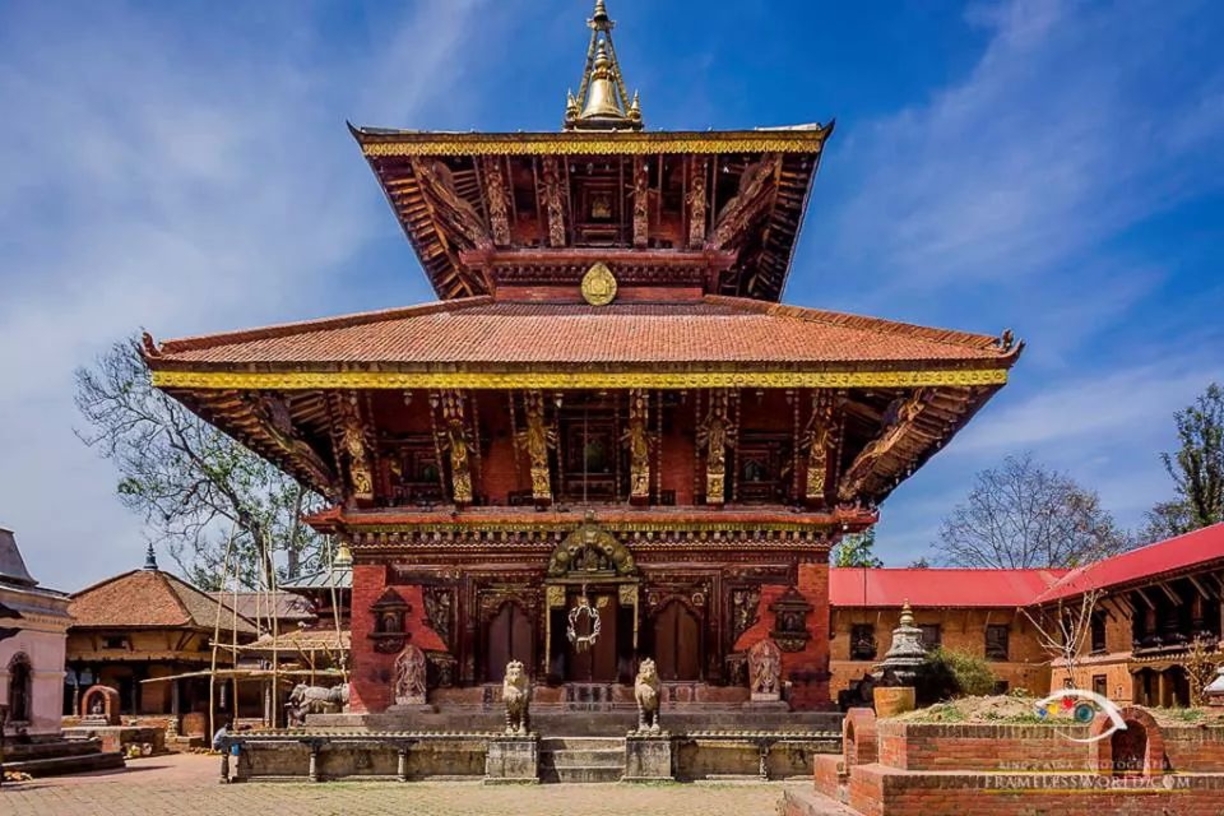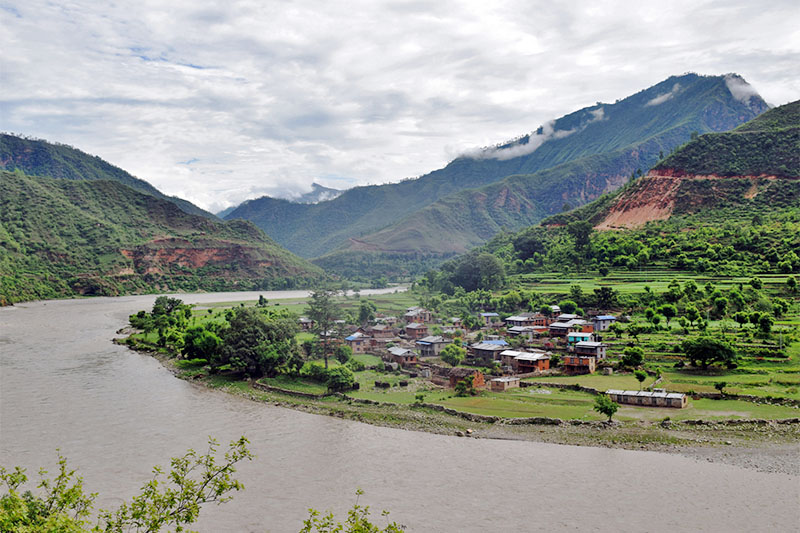If you do remember the general knowledge classes of your primary school in Nepal, you might remember learning about the Changu Narayan Temple as the oldest Hindu Temple in the Kathmandu Valley. Technically, the temple is situated in Changu Narayan Municipality of the Bhaktapur district and is at a distance of around 22 km from the main Kathmandu city.
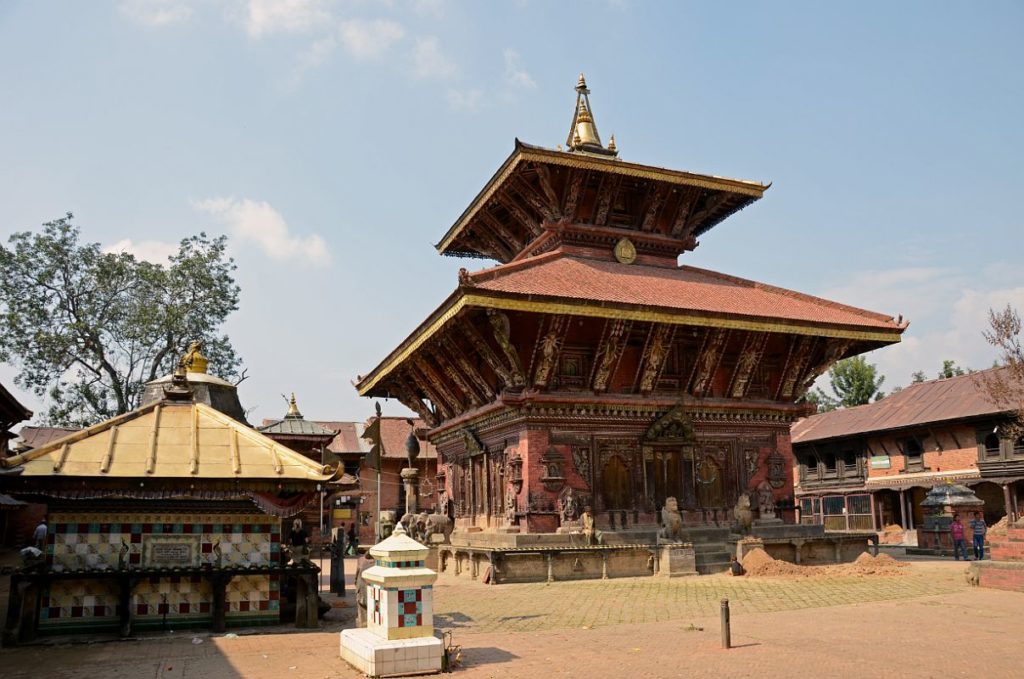
The Changunarayan Temple, that is believed to have been built in the 4th century during the Lichhavi Dynasty, is situated at the hilltop of Changu or Dolagiri. It towers over the district of Bhaktapur and holds some of the most ancient sculptures and scriptures dating back to as far as the 464 A.D.
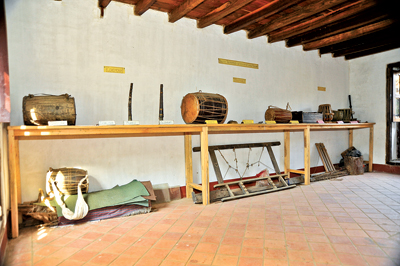
http://ecs.com.np/features/changu-museum-preserving-nepals-identity
The historical significance of the Changunarayan temple has been beautifully preserved at the Changu Museum, which is situated at the Mandir Walkway on the way to the temple. The museum holds a vast array of artifacts showcasing the historic weapons, musical instruments and monetary system of Nepal. The curator of the museum is an old man, who guides the visitors through artifacts showing the prehistoric years of the temple and tells an amazing tale of how the temple first came to be.
According to the legend, in very ancient times, a Gwala (cow-herder in English) bought a cow from a Brahmin named Sudarshan. The cow was known for producing large quantities of milk and the gwala used to take her to graze at the hill top of Changu, which was then filled with Champak trees.
One day, after coming home from the hilltop, the gwala noticed that the cow had been producing very little milk as compared to its regular quantity. This continued for a few days and the gwala went to ask Sudarshan for his help regarding the matter. Sudarshan and the gwala decided to keep an eye on the cow to solve the mystery. The pair watched over the cow and noticed that the cow wandered to the shade of a particular tree while grazing in the forest.
The two decided to observe the cow more closely and hid behind a tree to find out that a small black boy would appear out of the tree and drink the cow’s milk, resulting in the less amount of milk received by the gwala. They immediately thought that the boy must be a devil hiding in the tree and decided to axe down the tree.
Upon cutting the tree down, fresh blood flowed out of the tree trunk and a beheaded Vishnu appeared before them. Seeing that they had cut off the head of Lord Vishnu himself, the Brahmin and the gwala pleaded for mercy with the Lord. The Lord, however, told them not to worry as it was his sins that led to his beheading.
The Lord informed the two that he had unintentionally killed Sudarshan’s father while hunting and now he has paid his sins off with his head. He told them that, after killing his father, the Lord was looking for a way to break his curse for the heinous crime. He flew into the forest on his mount, Garuda, and landed on top of the Changu hill. There he lived anonymously as the tree and survived on stolen milk from the cow. Now that the tree had been cut , he had been beheaded and was free from his crimes towards the Brahmin and his father.
Hearing these words from the Lord Vishnu, the Brahmin and the Gwala decided to establish a small temple dedicated to Lord Vishnu where the tree was rooted. This was in the 4th century and the temple has been a sacred place for Hindus ever since then. It was rebuilt after a massive fire in 1702 and has been restored after the devastating earthquake of 2015.
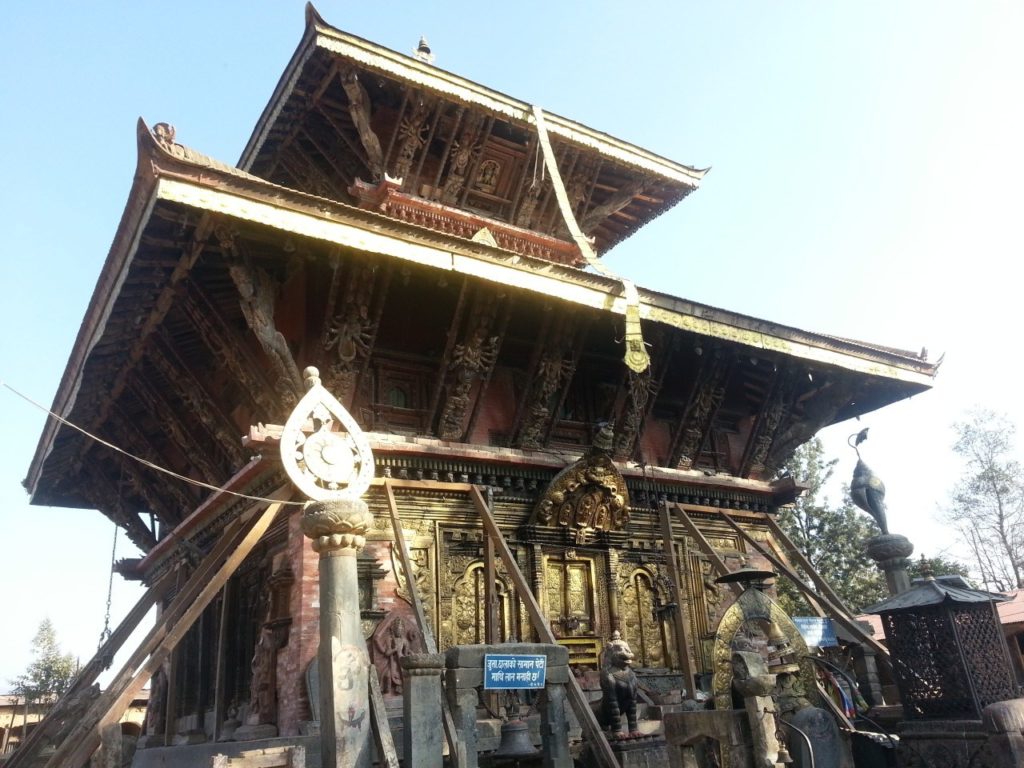
http://www.nepalnow.org/nepal-facts/changunarayan-temple-status-report/
The earthquake of 2015 affected the entire village of Changu and left it in drought of people. The village and the temple of Changunarayan, which is also a UNESCO World Heritage Site, both are slowly but surely gaining momentum in preparation for Visit Nepal 2020, which is less than five months away now.
Are you thinking about visiting the oldest temple of Changunarayan in Visit Nepal 2020? Let us know in the comments below.
